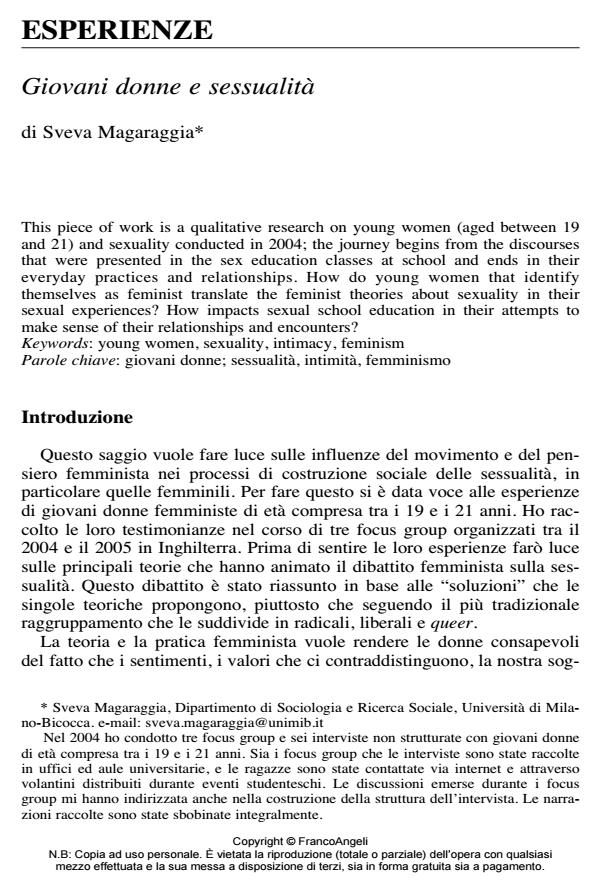Giovani donne e sessualità
Journal title SALUTE E SOCIETÀ
Author/s Sveva Magaraggia
Publishing Year 2013 Issue 2013/2
Language Italian Pages 15 P. 115-129 File size 112 KB
DOI 10.3280/SES2013-002007
DOI is like a bar code for intellectual property: to have more infomation
click here
Below, you can see the article first page
If you want to buy this article in PDF format, you can do it, following the instructions to buy download credits

FrancoAngeli is member of Publishers International Linking Association, Inc (PILA), a not-for-profit association which run the CrossRef service enabling links to and from online scholarly content.
This piece of work is a qualitative research on young women (aged between 19 and 21) and sexuality conducted in 2004; the journey begins from the discourses that were presented in the sex education classes at school and ends in their everyday practices and relationships. How do young women that identify themselves as feminist translate the feminist theories about sexuality in their sexual experiences? How impacts sexual school education in their attempts to make sense of their relationships and encounters?
Keywords: Young women, sexuality, intimacy, feminism
- ‘The pictures I really dislike are those where the girls are naked!’ Postfeminist norms of female sexual embodiment in contemporary Italian digital culture Arianna Mainardi, in Modern Italy /2018 pp.187
DOI: 10.1017/mit.2018.6
Sveva Magaraggia, Giovani donne e sessualità in "SALUTE E SOCIETÀ" 2/2013, pp 115-129, DOI: 10.3280/SES2013-002007